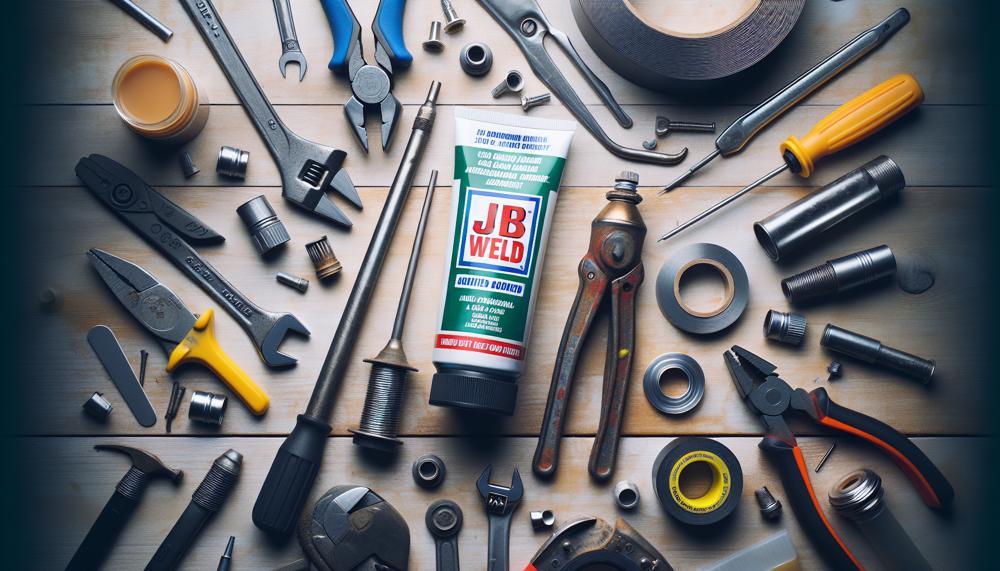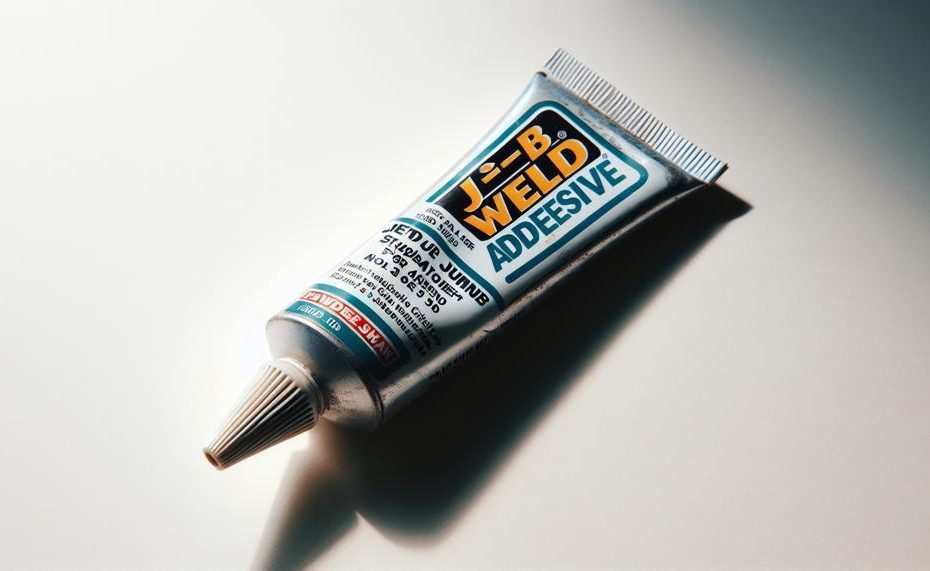JB Weld has become a giant in the world of adhesives, which is always growing. Their products promise to glue almost anything together and are strong enough to handle high heat and pressure. But even though JB Weld is very strong, it has a weakness: some materials just don’t stick to it, which can be frustrating for both DIYers and pros.
This blog post talks about some of the less well-known facts about JB Weld, mainly the things that it can’t do and the things that it can stick to.
If you know these things, you can make better decisions about what to use for your job or fix, ensuring that it lasts longer and works better.
So, what will jb weld not stick to?
- Polyethylene and Polypropylene Plastics: These common plastics are notoriously resistant to adhesion due to their non-porous nature and low surface energy.
- Silicone: Known for its flexibility and heat resistance, silicone eludes JB Weld’s grip, requiring specialized adhesives.
- Teflon (PTFE): Its slick surface makes it ideal for non-stick cookware but a slippery challenge for JB Weld.
- Certain Types of Rubber: Especially those that are oil-based, can be difficult for JB Weld to bond with due to their elasticity and surface composition.
Stick around as we explore the science behind why JB Weld can’t conquer these materials and how you can navigate these challenges in your projects.
Whether you’re a seasoned professional or a curious DIYer, this post promises crucial insights and tips to enhance your adhesive strategies.
Contents
What Will JB Weld Not Stick To?
JB Weld, while mighty and versatile, does have its limits. Its efficacy hinges on surface properties and preparation. Here’s a straightforward look at surfaces where JB Weld might not be the best choice:
| Material Type | Reasons for Poor Adhesion | Recommendations |
| Plastic | Some plastics are too smooth or have oily residues. | Roughen the surface; clean thoroughly. |
| Rubber, Silicone | Flexibility can break the bond. | Opt for adhesives designed for flexible materials. |
| Glass | Smooth surface; prone to stress fractures. | Use adhesives specifically for glass; apply carefully. |
| Painted Surfaces | Paint can peel off, taking JB Weld with it. | Remove paint; apply directly to the material underneath. |
| Stainless Steel, Aluminum, Copper | Metals may have a non-porous surface or protective coating. | Sand lightly for better adhesion. |
In essence, for a steadfast bond, your surface needs to be as receptive as possible to the magic of JB Weld. Make sure it’s clean, sometimes a bit rough, and remember, this isn’t a one-size-fits-all solution.
How Do You Make JB Weld NOT Stick?
To dodge the nuisance of JB Weld sticking where you wish it wouldn’t, heed the following advice:
Use a Release Agent:
A savvy move involves applying a barrier, known as a release agent, between JB Weld and the surface you want untouched. Think of release agents as the clever chaperones at a dance, keeping unwelcome suitors — in this case, adhesive — at bay.
Handy Household Release Agents:
- Petroleum jelly: A thin smear can work wonders.
- Cooking spray: A quick, kitchen-friendly fix.
- Wax paper: Acting as a physical barrier, it’s easy to use and remove.
Implement a Barrier:
Creating a tangible barricade can be a lifesaver. By inserting a separator like tape or plastic sheeting, you ensure JB Weld only bonds where it’s welcome.
Barrier Options:
- Tape: Masking or painter’s tape is easy to apply and remove.
- Plastic sheeting: A solid choice for larger areas.
Clean Surfaces Thoroughly:
Before engaging with JB Weld, purify the intended surfaces. Grime, oil, or residue can turn would-be non-stick surfaces into unintended glue traps.
Surface Suitability:
Not all surfaces are created equal. Test JB Weld on a small patch to ensure it behaves as expected, especially with non-metal materials.
Below is a table summarising these strategies:
| Strategy | Tools | Effectiveness |
| Release Agent | Petroleum jelly, cooking spray, wax paper | High (but use sparingly) |
| Barrier Method | Tape, plastic sheeting | Varies (ensure no gaps) |
| Surface Cleaning | Clean cloth, isopropyl alcohol | Essential for adhesion control |
| Surface Testing | Small JB Weld amount, test area | Crucial for unpredictable materials |
Why Does JB Weld Not Stick To Plastic?
The core of the matter rests on the nature of JB Weld and the myriad types of plastics. Initially designed for bonding metals, JB Weld’s chemical makeup—comprising epoxy and hardeners—excels in those scenarios.
However, plastics present a different challenge, their diverse chemical compositions making them a less than ideal surface for JB Weld’s intended applications.
Understanding the Compatibility:
JB Weld’s efficacy is paramount on metals, where its formula can achieve a strong, lasting bond. When it comes to plastic, the scenario changes significantly. Plastics like polyethylene and polypropylene possess slick, resilient surfaces that defy the adhesive qualities of JB Weld.
Not all is lost, though; some plastics may entertain a temporary alliance with JB Weld, but it’s a fleeting solution at best.
The Role of Surface Preparation:
For JB Weld to have any chance at adhering, the plastic’s surface needs meticulous preparation. A clean, slightly abraded surface might accept JB Weld, but this is more an exception than a rule. This table summarises the key points:
| Type of Material | JB Weld Compatibility | Surface Preparation Required |
| Metal | High | Clean, roughen |
| Polyethylene/Polypropylene | Low | Clean, sand (limited effectiveness) |
| Other Plastics | Variable | Clean, test small area first |
Will The JB Weld Adhere To Itself?
Yes, JB Weld can adhere to itself, making it a versatile tool for repairs and projects where the same material needs reinforcement or mending.
However, for optimal results, understanding its properties and application nuances is key. Here’s a concise guide:
| Surface Preparation | Clean and roughen | Essential for grip |
| Mixing Components | Equal parts resin and hardener | Key for chemical reaction |
| Application Conditions | Moderate temperature | Affects curing process |
| Curing Time | 24 hours for full strength | Varies by environment |
| Material Consideration | Varies by surface | Preparation key for adhesion |

Conclusion
When it comes to glues, JB Weld stands out because of how strong and useful it is.
But even giants have limits, and JB Weld is no different. Because glue has such a strong hold on some materials, it becomes clear that we need to stay away from them.
Some of these are the smooth surfaces of polyethylene and polypropylene plastics, the fact that rubber is strong, and the fact that Teflon doesn’t react with chemicals. These kinds of materials are hard for JB Weld to work with, so we have to find other ways to bond them or prepare the surfaces in special ways to get some kind of adhesive.
Looking into JB Weld’s flaws isn’t just for school; it’s also a useful way to learn how to deal with the difficulties of bonding on a variety of projects. Whether you’re a professional or a do-it-yourself fan, knowing the limits of JB Weld’s abilities gives you the power to make smart choices that will ensure the life and sturdiness of your work.
Always keep in mind that the key to a good bond is not just the strength of the glue but also knowing when and where to use it.





